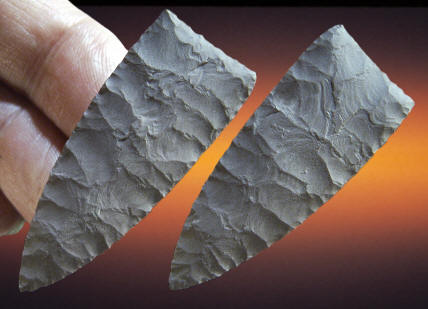|
GOSHEN
POINT
This Goshen point is described
by Frison and Bradley as a point that, "is different in shape from the
rest of the points (that were found on the Mill
iron site). It is nearly triangular with
slightly convex sides and has the slightest suggestion of a basal
indentation. We believe that it is very likely that this point resulted from
the all-over reworking of a piece of a broken point." Originally, this point
may have been larger and a
new base was applied after it was broken so it could be used again. This point is made of purple
colored Porcellanite measures 1 13/16 inches (4.7 cm) long. MILL IRON SITE
The Mill iron site is
located in Carter County, Montana in the southeastern part of the state.
It's now believed that it represents the Goshen Cultural Complex as it was
described at the Hell Gap site in southeastern Wyoming. There are now five
accelerator dates on the site that average over 11,000 years before present.
It remains to be proven if Goshen is a Clovis variant or if it should be
placed somewhere between Clovis and Folsom. |
